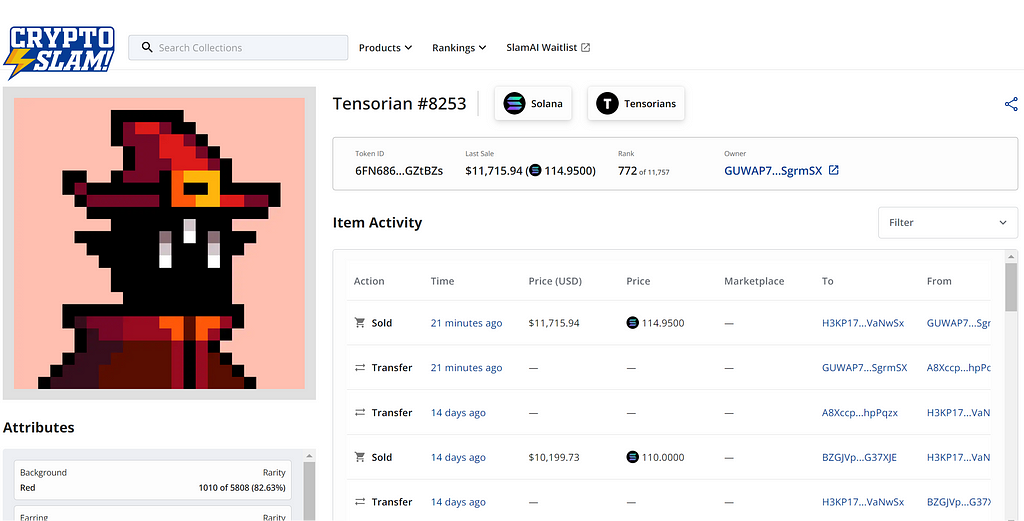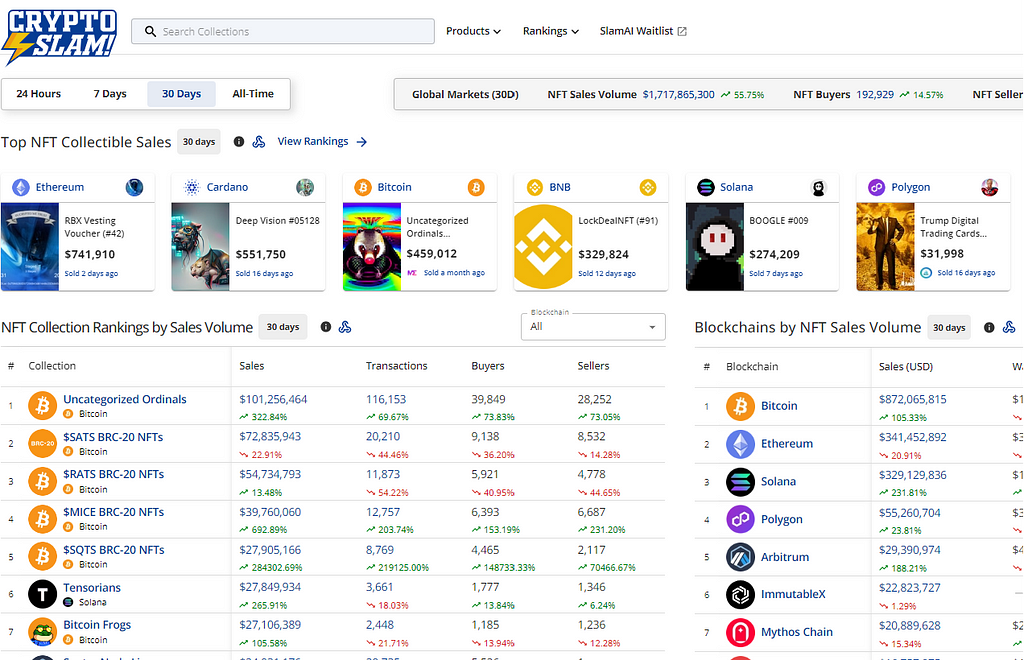In a stunning turn of events, Solana has surpassed Ethereum in monthly NFT sales for the first time in December 2023, signaling a significant shift in the NFT market dynamics. According to CryptoSlam, Solana recorded approximately $366.5 million in NFT sales, exceeding Ethereum’s $353.2 million. The meteoric rise of Solana is not only evident in its NFT sales but also in the notable surge in the price of its Sol token, which saw a 71% increase over the past month, quadrupling in value over the last three months.
The success of Solana in the NFT realm is evident not just in financial figures but also in the number of unique buyers and sellers. The platform logged nearly 6.6 million NFT transactions involving 218,000 sellers and 279,000 buyers. In contrast, Ethereum had 114,000 sellers and 143,000 buyers across 698,000 transactions.
While the price increase of Solana may contribute to the rise in NFT sales, the tripling in the number of unique traders and a six-fold increase in monthly transactions suggest a broader dynamic and hype surrounding Solana projects. Notable NFT projects like Tensorians and Mad Lads have contributed to Solana’s appeal and significantly aided its success in December. This shift highlights the dynamic nature of the NFT landscape, where Solana emerges as a formidable player challenging Ethereum’s traditional dominance.

Bitcoin Ordinals: NFTs on Bitcoin Stirring Up the Community
In an even more surprising development: Bitcoin Ordinals, which enable NFT-like media on the Bitcoin blockchain, recorded an impressive trading volume of $881.2 million in December 2023. Unlike NFTs on other networks, this Bitcoin Ordinals sales volume also includes BRC-20 tokens, akin to fungible tokens on various smart contract blockchains. Clearly, Bitcoin Ordinals are the new hot trend!
Bitcoin Ordinals have recently emerged as a significant phenomenon, capturing the attention of both enthusiasts and opponents within the Bitcoin community. Ordinals enable the inscription of digital assets onto satoshis, the smallest units of Bitcoin. In this section, we delve into the origins of Bitcoin Ordinals, the controversy surrounding them, and their potential implications for the future of Bitcoin.
Bitcoin Ordinals origins
Bitcoin Ordinals were made possible by two key network updates to Bitcoin: SegWit (Segregated Witness) in 2017 and Taproot in 2021. The SegWit update resulted in a soft fork of Bitcoin, dividing the Bitcoin transaction structure into two parts: the transaction itself and the “witness” part. SegWit aimed to prevent unintended changes in Bitcoin transactions and to enable more transactions to be stored within a single block. It increased the block size limit to 4 MB, allowing for a higher throughput of transactions on the Bitcoin blockchain. Following SegWit, the Taproot update enhanced the security and privacy of Bitcoin transactions and introduced the inscription of data. Although unintended, these updates laid the groundwork for launching the Bitcoin Ordinal protocol, designed by Casey Radarmor.
For more content and updates, I invite you to join me on Twitter where I share more NFT news, ART news, trends, and tips for both seasoned and aspiring collectors. Follow me on Twitter at: https://twitter.com/NFT_Captain_ and let’s explore the ever-evolving NFT landscape together!
Solana NFTs and Bitcoin Ordinals Outperform Ethereum in Monthly Sales was originally published in The Dark Side on Medium, where people are continuing the conversation by highlighting and responding to this story.
